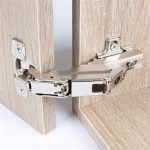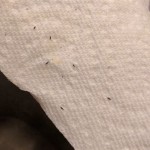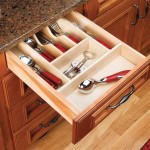Java Stain Kitchen Cabinets: A Comprehensive Guide
Java stain has become a popular choice for kitchen cabinets, offering a rich, warm, and inviting aesthetic. This deep brown hue complements a variety of design styles, from traditional to contemporary, and offers a versatile backdrop for various countertop materials and hardware finishes. Understanding the characteristics of Java stain, its application process, and maintenance requirements can help homeowners make informed decisions about incorporating this popular color into their kitchen design.
Java stain is typically categorized as a dark brown, often with hints of red or gray undertones depending on the specific wood species and manufacturer. Its depth of color provides a striking contrast against lighter countertops and backsplashes, creating a visually appealing and dynamic kitchen space. The richness of Java stain also lends a sense of warmth and sophistication, making it a suitable choice for creating a cozy and inviting atmosphere.
The appearance of Java stain can vary significantly based on the type of wood used for the cabinets. Oak, maple, cherry, and hickory are common choices for kitchen cabinetry, and each wood species absorbs stain differently. Oak, with its prominent grain pattern, will showcase the stain's color in a more pronounced way, highlighting the natural texture of the wood. Maple, with its smoother, more uniform grain, will result in a more even and consistent stain application. Cherry wood, naturally reddish, will interact with the Java stain to create a deeper, more complex hue. Hickory, known for its varied grain patterns and color variations, will produce a more rustic and textured finish with Java stain.
Before applying Java stain to kitchen cabinets, proper preparation is crucial. The cabinets should be thoroughly cleaned to remove any grease, dirt, or grime that could interfere with the stain's penetration. Sanding the cabinets creates a smooth surface for even stain absorption and helps the stain adhere properly. Any existing finish, such as paint or varnish, should be completely removed before staining. A wood conditioner can be applied before staining, especially on softer woods like pine, to help prevent blotchiness and ensure a more uniform finish.
The application of Java stain can be achieved through various methods, including brushing, wiping, or spraying. Brushing allows for precise application and is suitable for intricate cabinet details. Wiping the stain onto the surface with a cloth provides greater control over the color intensity and helps achieve a more even finish. Spraying is typically used in professional settings and offers a fast and efficient application method. Regardless of the chosen application method, it's important to apply the stain evenly and in the direction of the wood grain. After allowing the stain to penetrate for the recommended time, excess stain should be wiped off to prevent a sticky or uneven finish. Multiple coats of stain can be applied to achieve the desired depth of color, allowing each coat to dry completely before applying the next.
Protecting the stained cabinets with a sealant is essential for preserving their beauty and durability. Sealants, such as polyurethane or varnish, provide a protective barrier against moisture, scratches, and stains. They also enhance the richness of the Java stain and provide a smooth, easy-to-clean surface. Sealants can be applied in multiple coats, with light sanding between each coat for a smooth and even finish. Choosing the appropriate sealant depends on the desired level of sheen, from matte to high gloss.
Maintaining Java stained kitchen cabinets involves regular cleaning and care. Dust and fingerprints can be removed with a soft, damp cloth. For more stubborn stains or spills, a mild soap and water solution can be used, avoiding harsh chemicals or abrasive cleaners that could damage the finish. It's important to dry the cabinets thoroughly after cleaning to prevent water damage. Periodically, the cabinets may benefit from a fresh coat of sealant to maintain their protective barrier and refresh their appearance.
The versatility of Java stain allows it to complement a wide range of kitchen design styles. It pairs well with various countertop materials, including granite, quartz, marble, and butcher block. Light-colored countertops create a striking contrast against the dark Java cabinets, while darker countertops offer a more cohesive and monochromatic look. Hardware choices, such as brushed nickel, oil-rubbed bronze, or black, can further enhance the overall aesthetic and complement the richness of the Java stain.
Choosing Java stain for kitchen cabinets offers a timeless and elegant look that can enhance the overall aesthetic of any kitchen. Understanding the characteristics of the stain, the proper application techniques, and the ongoing maintenance requirements can help homeowners enjoy the beauty and durability of Java stained cabinets for years to come.

Java Gel Kitchen Cabinets Stained Decor Black

How To Paint Cabinets With Java Gel Stain My Homier Home

Java Gel Stain Kitchen Transformation General Finishes Design Center

Kitchen In Java Gel Stain And High Performance Top Coat General Finishes Design Center

How To Paint Cabinets With Java Gel Stain My Homier Home

Kitchen Makeover In Java Gel Stain General Finishes Design Center

Pickled Oak Bathroom Vanity Before And After Gel Stain Staining Cabinets Kitchen Makeover Wood

How To Gel Stain Cabinets She Buys He Builds

20 Java Gel Stain Tips Salvage Sister And Mister

Java Gel Kitchen Cabinets General Finishes Design Center
Related Posts








